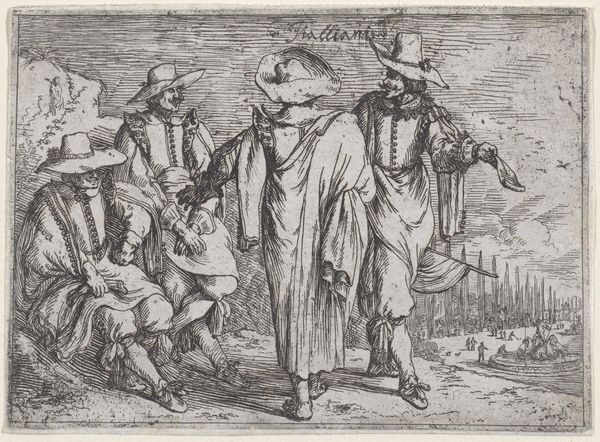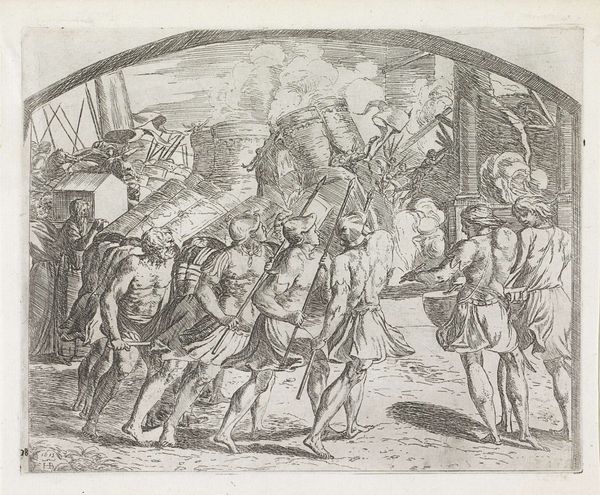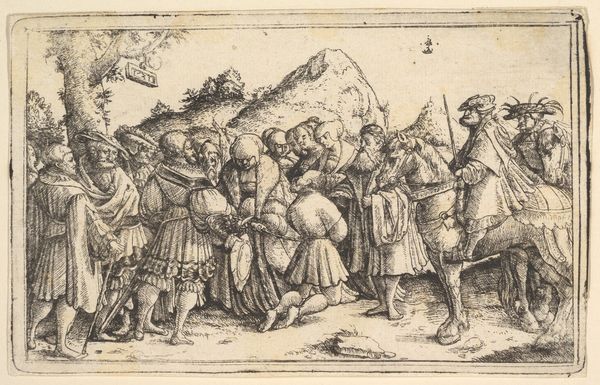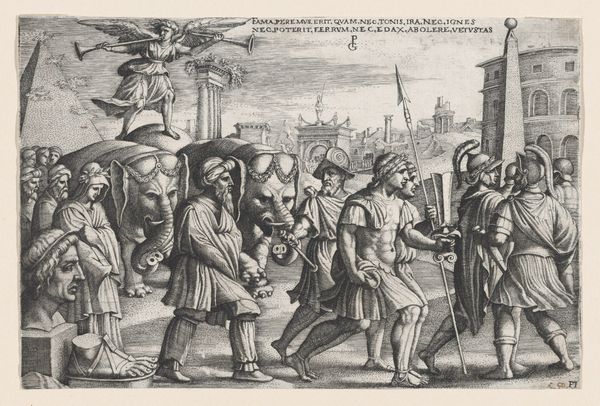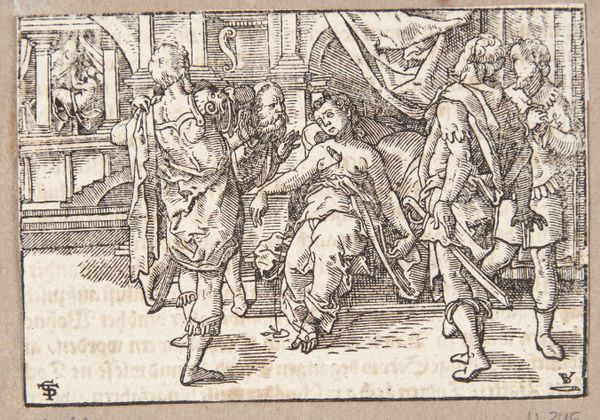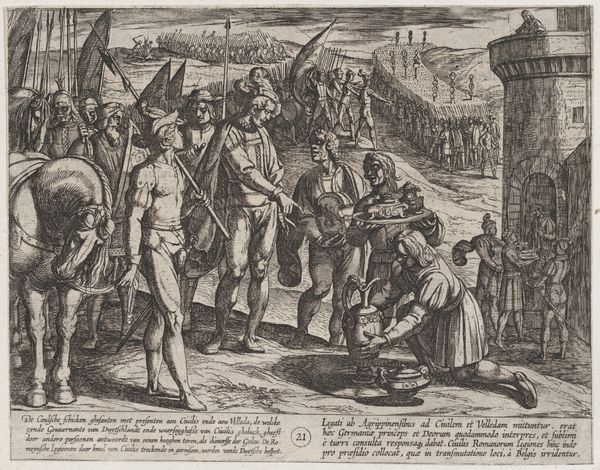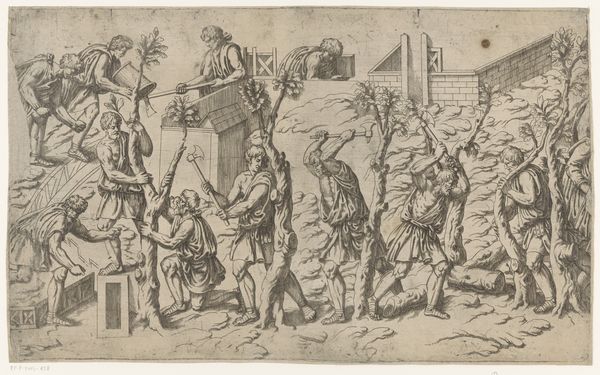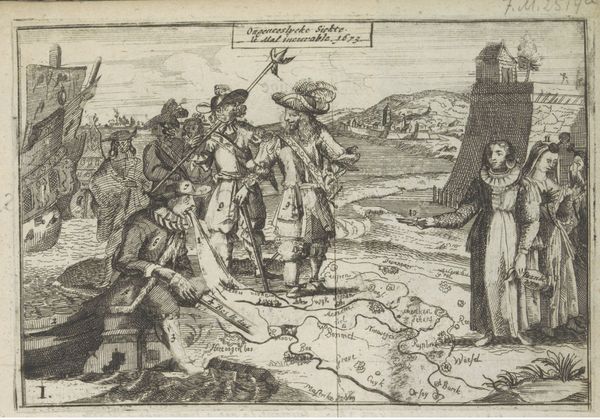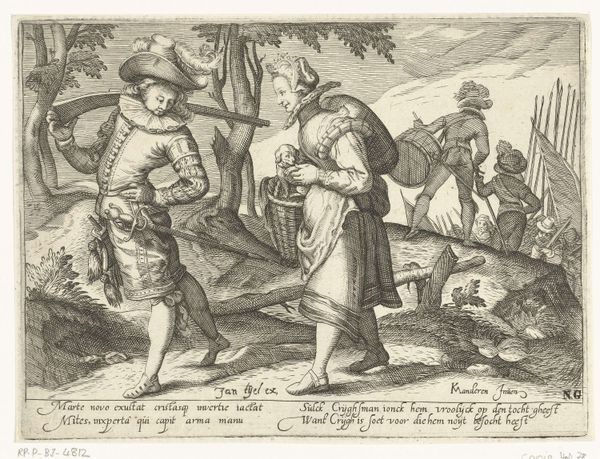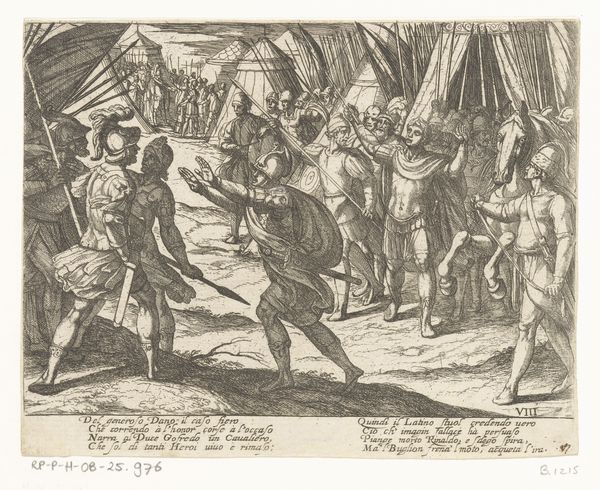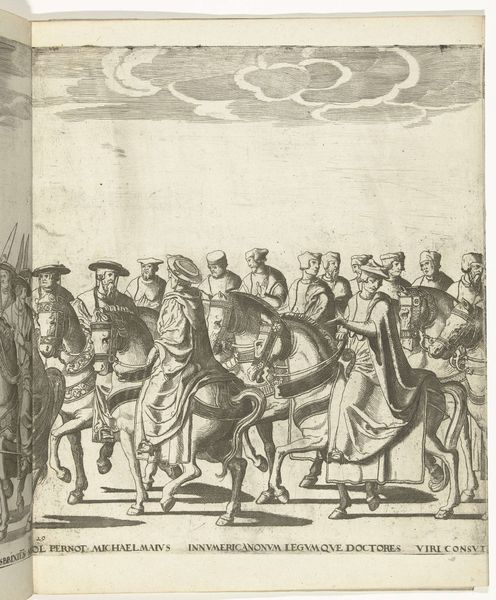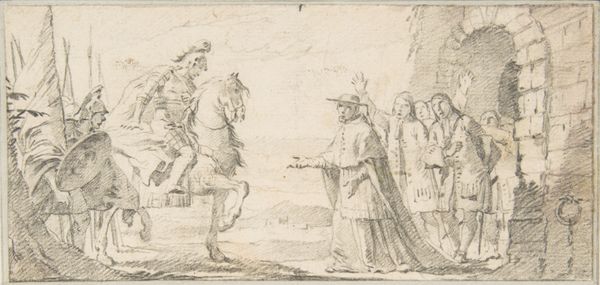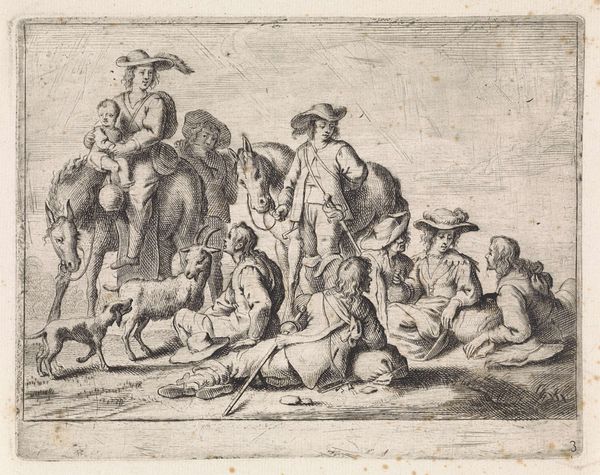
Germans, from a set of costume plates of different nations 1595 - 1645
0:00
0:00
drawing, print, etching, engraving
#
drawing
#
narrative-art
#
baroque
# print
#
etching
#
figuration
#
history-painting
#
engraving
Dimensions: Sheet (Trimmed): 3 3/16 × 4 3/8 in. (8.1 × 11.1 cm)
Copyright: Public Domain
Curator: This is an etching by Johann Wilhelm Baur, from a series of costume plates illustrating different nations. This one is called "Germans," and it was likely created sometime between 1595 and 1645. Editor: My initial feeling? "Germans"... well, these guys look like they're heading to a very serious hat convention. Seriously, look at those brims! Big hair energy for the early modern period, it seems. Curator: Well, these aren't just any Germans. The style and dress suggest noblemen or soldiers during the Thirty Years' War. Baur was documenting a specific historical and social moment through the lens of costume. This collection reflects Europe's increasing fascination with national identity. Editor: Oh, a war! Everything starts making more sense now, considering all the swords hanging from their sides. Even their eyes look somewhat troubled or burdened by this reality, yet the picture's layout is funny because the street on which all three are heading out reminds me of a child's miniature car race track! Curator: You can observe Baur's skill as a draughtsman. The detailed rendering of fabrics, the meticulous line work... Engravings like these were used to disseminate images and information. It gave access to people from different backgrounds and circumstances a peak at the lives and outfits of faraway nations, contributing to ideas of nationhood, foreignness, and cultural understanding. Editor: It does give off the air of serious, stuffy education, even with their fluffy, puffy sleeves. It seems so far removed from, say, Rembrandt’s looser lines and more human portrayals of ordinary folk. Curator: But, while perhaps lacking the emotional depth of a Rembrandt, it has another purpose. We must look at these prints in their socio-political setting, in the service of constructing larger notions of national character and differentiation. Editor: Hmmm. Perhaps Baur’s steady hand served a bigger purpose than just illustrating fashion trends. It all boils down to whose voice and narrative get etched into history, right? Thanks for pointing that out; this really made me see something more than funny hats! Curator: Precisely! It is the function of these images that ultimately matters, as historical evidence about that crucial point in our collective European history!
Comments
No comments
Be the first to comment and join the conversation on the ultimate creative platform.
